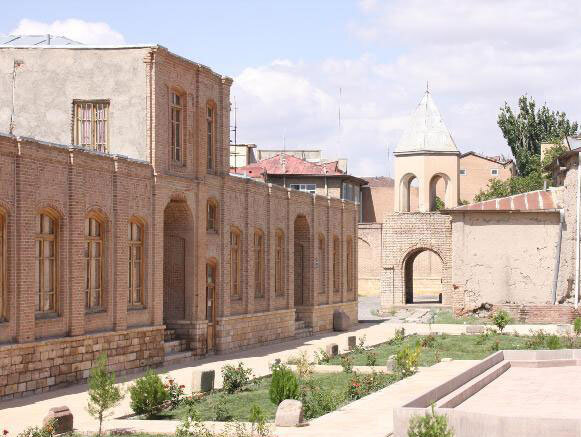5th-century church in northwestern Iran restored

TEHRAN – The Saint Hovhannes Church in the city of Maragheh, northwestern East Azarbaijan province, has undergone some rehabilitation works, the provincial tourism chief has said.
The restoration project is complete by 80 percent after almost two years, Ahmad Hamzezadeh announced on Thursday.
The project involves reinforcement and strengthening of the walls and rooftop, replacement of the worn-out building materials, and repairing the church’s façade, the official added.
Built in the 5th century, Saint Hovhannes Church is Maragheh city’s only church, which was popular during the Ilkhanid era (1256–1353), when Maragheh was one of the Iranian prosperous cities.
The church is an Armenian Catholic church named after one of the apostles called Johannes or John, also known as Hovhannes in the Armenian language.
Sait Hovhannes Church has three sections, the Archbishop’s residence, a school, and an altar. The church’s domed entrance is in its west wing, which is a conical-shaped dome with a steel cover holding the bell.
The main space of the church is a rectangle with an altar in its east wing. Lighting is provided by the main entrance and small windows in the eastern, northern, and western walls. A string of one-story buildings has been constructed in the west wing of the courtyard which is now derelict. Other rooms, which were used by the poor, are also seen around the courtyard.
The original building has been destroyed many times throughout history, but the present structure was built in 1840 by French and Russian architects.
However, in recent years, the church has been abandoned due to the migration of Armenians to Tehran and other cities.
Iran is home to several ancient and historical churches. Christians, Jews, and Zoroastrians are the most significant religious minorities in the country with Christians constituting the bulk.
Soaked in history and culture for millennia, Tabriz, which is the capital of East Azarbaijan, embraces several historical and religious sites, including Jameh Mosque of Tabriz and Arg of Tabriz, and UNESCO-registered Tabriz Historic Bazaar Complex to name a few. The city became the capital of the Mongol Il-Khan Mahmud Gazan (1295–1304) and his successor. Timur (Tamerlane), a Turkic conqueror, took it in 1392. Some decades later the Kara Koyunlu Turkmen made it their capital, it was when the famous Blue Mosque was built in Tabriz.
The city retained its administrative status under the Safavid dynasty until 1548 when Shah Tahmasp I relocated his capital westward to Qazvin. During the next two centuries, Tabriz changed hands several times between Persia and Ottoman Empire. During World War I, the city was temporarily occupied by Turkish and then Soviet troops.
ABU/MG
Leave a Comment